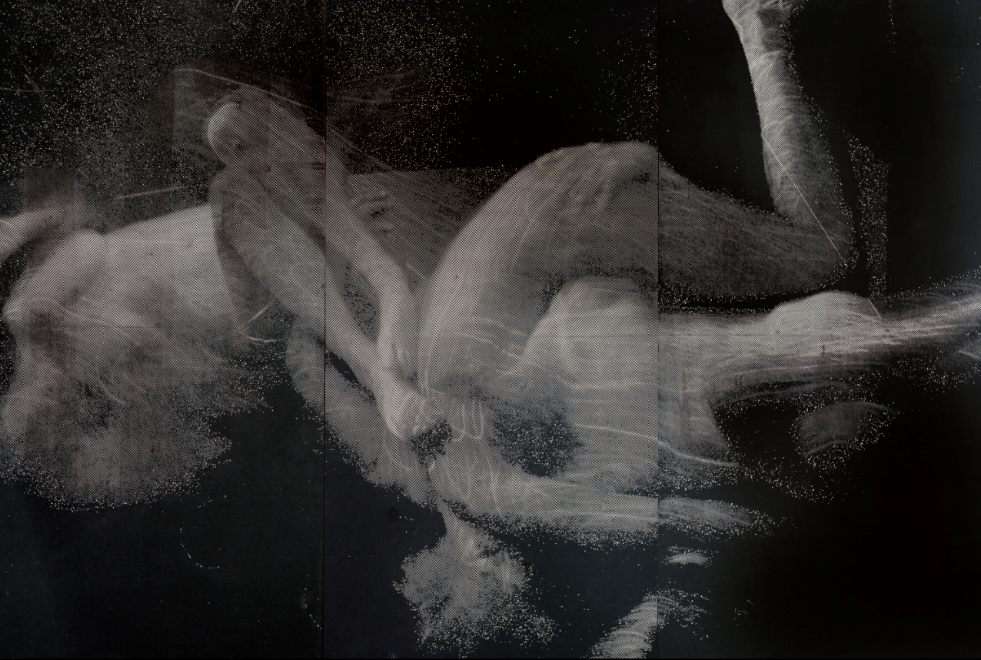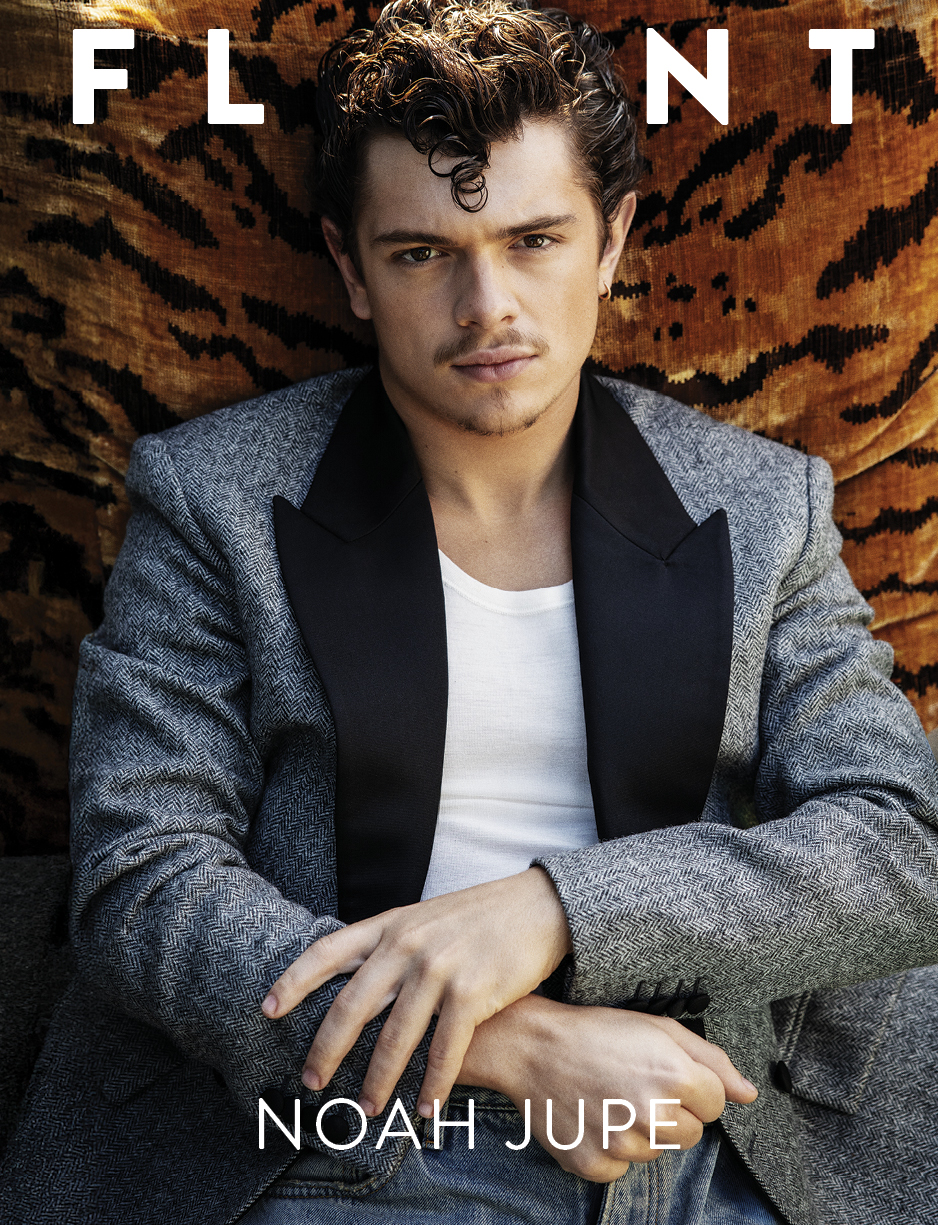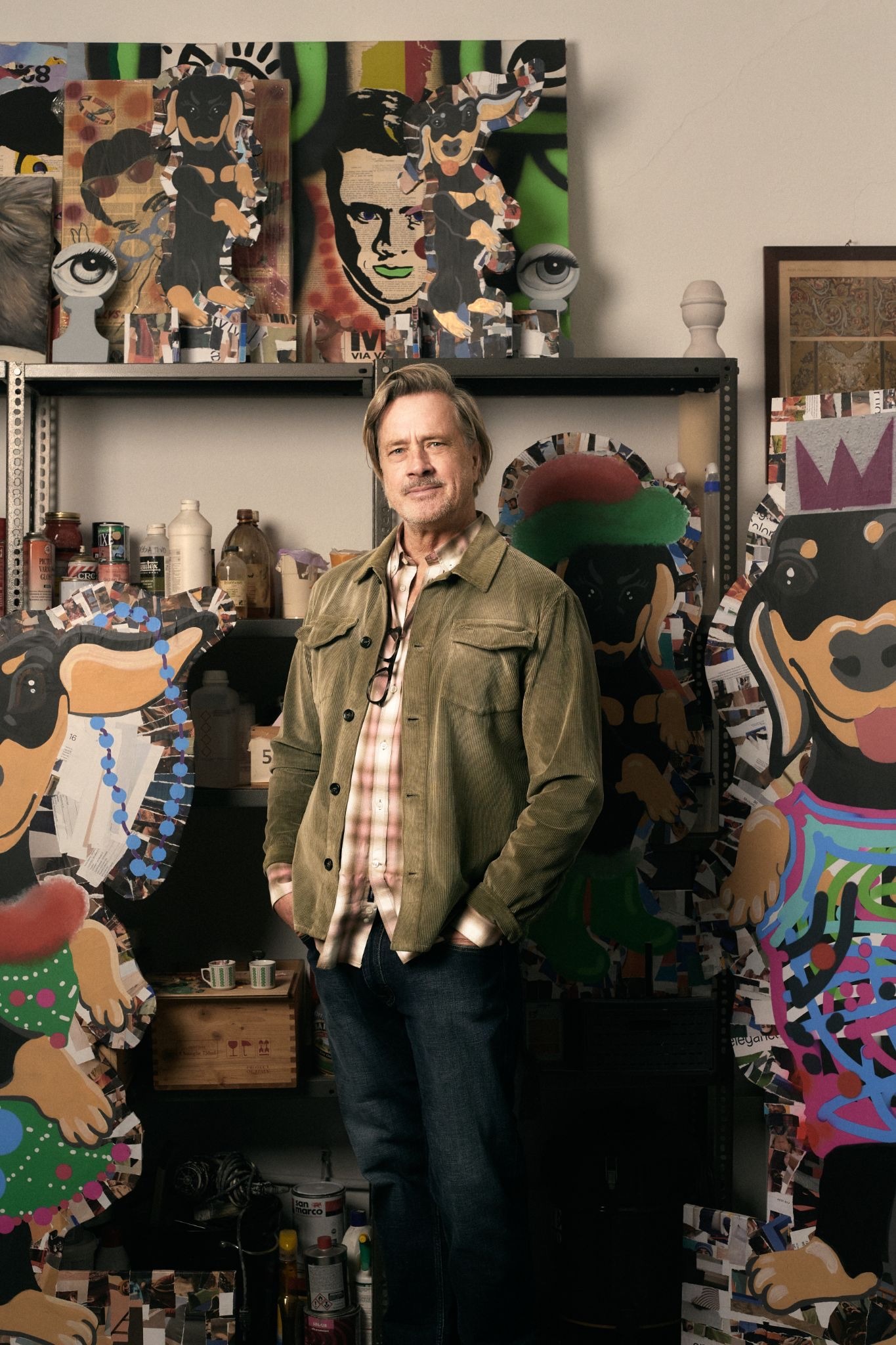
Artist Matthew Stone's email signature when he’s mobes contains a pertinent farewell: "Sent from a parallel universe." Indeed, then. The artist’s notable expression (commencing for the most part with London collective !WOWOW! with subsequent stops at Peres Projects or Asia Song Society, to this year’s Marrakech Bienalle, among numerous others): sculpture, performance, photography, composition, club kidism, and perhaps most dear to his heart, chit chat. For Stone, the human experience is often a self-contained silo, a universe to itself; wholly incommunicable when in motion. Yet it's our parallelization of these universes, our attempt at bridging, pausing for a moment, that's critical for keeping us as kinetically evolutionary as the ideals in his work.
"I don't have any answers—life is never that simple," Stone shares over the phone from Cologne, where he's installing his latest show, a few weeks after his second U.S. solo exhibition, "Love is Focused like a Laser" at New York's The Hole. "That's why I propose conversations, and multitudes,” he continues. “When we try to be purely rational about human interaction, these sort of absurdities arise, and someone else's actions seem violent rather than timed. That sort of potentiality in things is inspiring.” The multitudes, the potentiality, is patently present in Stone's latest work, which see his inventive group torso configurations made almost transcendently mist-like, by way of laser guided photography and engraving in post.
And while the visual aide provides the obvious connection of which the artist speaks (in the darkened, cave-like gallery space, torsos are strung together by luminescence), the metaphysical auger of intrigue that blankets Stone's work—and has distinctly defined his personality in the art world amidst London’s avant garde—is the magic that sits in his discussion of, and fascination with, the larger picture. "The danger is in strict ideologies," he says, "not in idealism—an ideal body, an ideal race, whatever; it doesn't work on so many levels. And there are a lot of ideals and perhaps humans aren't capable of truly perceiving them.”


Let’s attempt, though, to perceive of Matthew Stone. He’s on the scene, as commodity language might have it, full stop. He’s 30. He’s fabulous. A while back Flaunt saw its cover erected into pyramidal eroticism courtesy the lad. He scores Gareth Pugh runway. He’s in Miami this year with his The Hole to share short films and get weird with London DJ Mike Q (who he met snapping for I.D.) and engage with anyone or anyone desiring similar. But what makes Matthew Stone a groovy conspirator is not his prolific footprint. It’s his self-sacrificial yet optimistic opinion that community is not and will never be
faddish . “What's fascinating about the scene,” Stone replies when asked if the scene leaves him exhausted, "is that it is so much about a show, and sparkling as an individual, and manifesting excellence in front of a crowd, and I think there are a lot of similarities in the people involved. The dance scene, for instance, can be just heartbreakingly beautiful, and intense, and connected, and real, and that's what continues to move me.”
Movement, again, brings us back full circle. And that’s okay. Because for a moment we’ll sit here, enjoying the twinkly lights, the sparkling individuals. “Look, we're not going to save the world by making expensive objects and putting them in galleries,” Stone concludes, “but I still believe that making beautiful gestures in any format has the potential to affect change. In the end, I think that everything is effectively art, but I think that art needs to exist to remind us of that. I think a lot of artists try to prove that anything can be an artwork, and perhaps when people encounter that, they might be reminded that their ordinary lives have that potential as well—to be an artwork."
Written by: Matthew Bedard

 Let’s attempt, though, to perceive of Matthew Stone. He’s on the scene, as commodity language might have it, full stop. He’s 30. He’s fabulous. A while back Flaunt saw its cover erected into pyramidal eroticism courtesy the lad. He scores Gareth Pugh runway. He’s in Miami this year with his The Hole to share short films and get weird with London DJ Mike Q (who he met snapping for I.D.) and engage with anyone or anyone desiring similar. But what makes Matthew Stone a groovy conspirator is not his prolific footprint. It’s his self-sacrificial yet optimistic opinion that community is not and will never be faddish . “What's fascinating about the scene,” Stone replies when asked if the scene leaves him exhausted, "is that it is so much about a show, and sparkling as an individual, and manifesting excellence in front of a crowd, and I think there are a lot of similarities in the people involved. The dance scene, for instance, can be just heartbreakingly beautiful, and intense, and connected, and real, and that's what continues to move me.”
Movement, again, brings us back full circle. And that’s okay. Because for a moment we’ll sit here, enjoying the twinkly lights, the sparkling individuals. “Look, we're not going to save the world by making expensive objects and putting them in galleries,” Stone concludes, “but I still believe that making beautiful gestures in any format has the potential to affect change. In the end, I think that everything is effectively art, but I think that art needs to exist to remind us of that. I think a lot of artists try to prove that anything can be an artwork, and perhaps when people encounter that, they might be reminded that their ordinary lives have that potential as well—to be an artwork."
Let’s attempt, though, to perceive of Matthew Stone. He’s on the scene, as commodity language might have it, full stop. He’s 30. He’s fabulous. A while back Flaunt saw its cover erected into pyramidal eroticism courtesy the lad. He scores Gareth Pugh runway. He’s in Miami this year with his The Hole to share short films and get weird with London DJ Mike Q (who he met snapping for I.D.) and engage with anyone or anyone desiring similar. But what makes Matthew Stone a groovy conspirator is not his prolific footprint. It’s his self-sacrificial yet optimistic opinion that community is not and will never be faddish . “What's fascinating about the scene,” Stone replies when asked if the scene leaves him exhausted, "is that it is so much about a show, and sparkling as an individual, and manifesting excellence in front of a crowd, and I think there are a lot of similarities in the people involved. The dance scene, for instance, can be just heartbreakingly beautiful, and intense, and connected, and real, and that's what continues to move me.”
Movement, again, brings us back full circle. And that’s okay. Because for a moment we’ll sit here, enjoying the twinkly lights, the sparkling individuals. “Look, we're not going to save the world by making expensive objects and putting them in galleries,” Stone concludes, “but I still believe that making beautiful gestures in any format has the potential to affect change. In the end, I think that everything is effectively art, but I think that art needs to exist to remind us of that. I think a lot of artists try to prove that anything can be an artwork, and perhaps when people encounter that, they might be reminded that their ordinary lives have that potential as well—to be an artwork."










.JPG)
.jpg)







